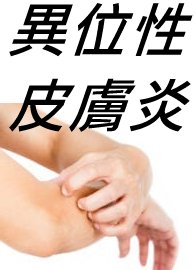| common name | Liquorice Root |
This product is the root and rhizome of the perennial herbaceous plant of the legume family, Liquorice Root (Glycyrrhiza uralensis Fisch.), Inflated Liquorice Root (Glycyrrhiza inflata Bat.), or Glabrous Liquorice Root (Glycyrrhiza glabra L.). It is mainly produced in Inner Mongolia, Shanxi, Gansu, Xinjiang, and other regions. It is harvested in spring and autumn, with fibrous roots removed, and then dried in the sun. It is cut into thick slices and used raw or honey-fried.
bubble_chart Properties and Meridians
Sweet, neutral. act on heart, lung, spleen and stomach channels.
Tonifying qi to invigorate the middle, clearing heat and removing toxins, resolving phlegm and relieving cough, alleviating pain and spasms, harmonizing medicinal properties.
- Used for severe palpitation due to insufficiency of heart qi, with knotted and intermittent pulse, and fatigue, lack of strength, poor appetite, and loose stool due to spleen qi deficiency. It can tonify and replenish the qi of the heart and spleen. For heart qi deficiency, it is often used as the main ingredient, combined with medicinals such as Ginseng, Donkey-hide Gelatin, Cinnamon Twig, etc., as in Prepared Licorice Decoction. For spleen qi deficiency, it is often combined with Tangshen, White Atractylodes Rhizome, etc.
- Used for cough with excessive phlegm. It can resolve phlegm and relieve cough, and can be widely applied with appropriate combinations of medicinals according to the symptoms. For wind-cold cough, it can be combined with Ephedra, Bitter Apricot Seed; for lung heat cough and wheezing, it can be combined with Gypsum, Ephedra, Bitter Apricot Seed; for cold phlegm cough and wheezing, it can be combined with Dried Ginger, Asarum; for damp phlegm cough, it can be combined with Pinellia, Poria.
- Used for spasmodic pain in the epigastrium and limbs. It can alleviate spasms and relieve pain. For spasmodic pain due to insufficient yin blood and malnutrition of the tendons, it is often combined with Peony Root, as in Peony and Licorice Decoction; for spasmodic pain due to deficiency-cold of the spleen and stomach and inability of nutrient-blood to warm and nourish, it is often combined with Peony Root, maltose, etc., as in Minor Center-Fortifying Decoction. Recent reports indicate that using Licorice Root powder alone or in combination with medicinals such as cuttlebone sepium, Clam Shell, etc., to treat gastric and duodenal ulcers has shown good short-term efficacy.
- Used in formulas with strong medicinal properties. It can moderate the intensity or reduce toxic side effects, and can also regulate the spleen and stomach. For example, Stomach-Regulating Purgative Decoction uses Licorice Root to moderate the properties of Mirabilite and Rhubarb, preventing excessive purgation and avoiding irritation of the large intestine that could cause abdominal pain. In Pinellia Heart-Draining Decoction, Licorice Root is used with Pinellia, Dried Ginger, Skullcap Root, Coptis Rhizome to harmonize cold and heat, balance ascending and descending, and achieve a harmonizing effect.
- Used for heat toxin sores and ulcers, sore throat, and drug or food poisoning. It can clear heat and remove toxins. For heat toxin sores and ulcers, it is often combined with Lonicera, Forsythia, etc. For sore throat, it is often combined with Platycodon Root. For drug or food poisoning, when no specific detoxifying medicine is available, Licorice Root can be used, or it can be combined with Mung Bean or soybeans to make a decoction.
- Bencao Zheng states: "(Liquorice Root) possesses a neutral and harmonious nature, with the ability to regulate and tonify. Therefore, it can detoxify poisonous drugs, moderate the harshness of strong drugs, assist the external effects of surface-acting drugs, and slow down the rapid action of purgative drugs. It can enter the qi with qi-regulating drugs and enter the blood with blood-regulating drugs, making it universally applicable. Hence, it is called the 'National Elder.' However, it should not be added in cases of abdominal fullness, as it may cause distension; nor should it be used when rapid purgation is required, as it may slow down the effect. This is essential knowledge."
Decoct and take 3-10g. For clearing heat and removing toxins, it is advisable to use it raw; for tonifying the middle and alleviating urgency, it is advisable to use it roasted.
bubble_chart Cautions and Contraindications
It is not suitable for those with dampness-induced distension and fullness, or edema. It is incompatible with Peking Euphorbia Root, Lilac Daphne, Gansui Root, and seaweed. Long-term use of a large dose of raw Liquorice Root may cause edema and other symptoms.
bubble_chart Modern Pharmacology
Liquorice Root contains glycyrrhizin, which is a diglucuronide of glycyrrhetinic acid, and is the sweet component of Liquorice Root. Additionally, it contains various flavonoid components.
- Liquorice Root has effects similar to adrenal cortical hormones. It inhibits excessive gastric acid secretion caused by histamine and has antacid and smooth muscle spasm-relieving effects on the gastrointestinal tract.
- The flavonoids, extract, and glycyrrhetinic acid of Liquorice Root all have significant antitussive effects, with the expectorant effect also being quite notable. The strength of these effects is glycyrrhetinic acid > Liquorice Root flavonoids > Liquorice Root extract.
- Liquorice Root also has anti-inflammatory and anti-allergic effects, protecting the mucous membranes of inflamed throats and trachea.
- Liquorice Root extract and glycyrrhizin have a detoxifying effect similar to glucuronic acid against certain toxins.
bubble_chart Other Related Items






